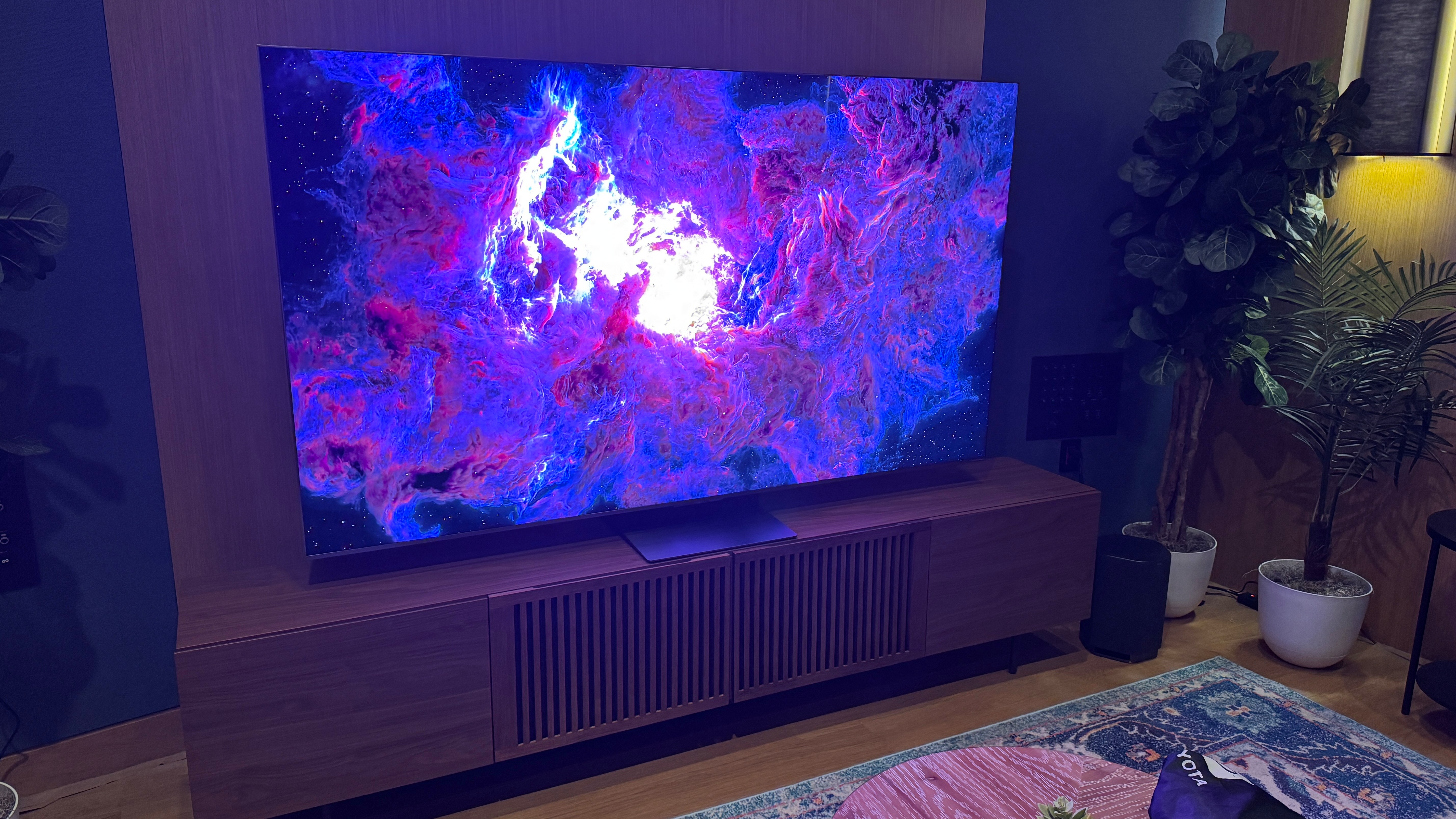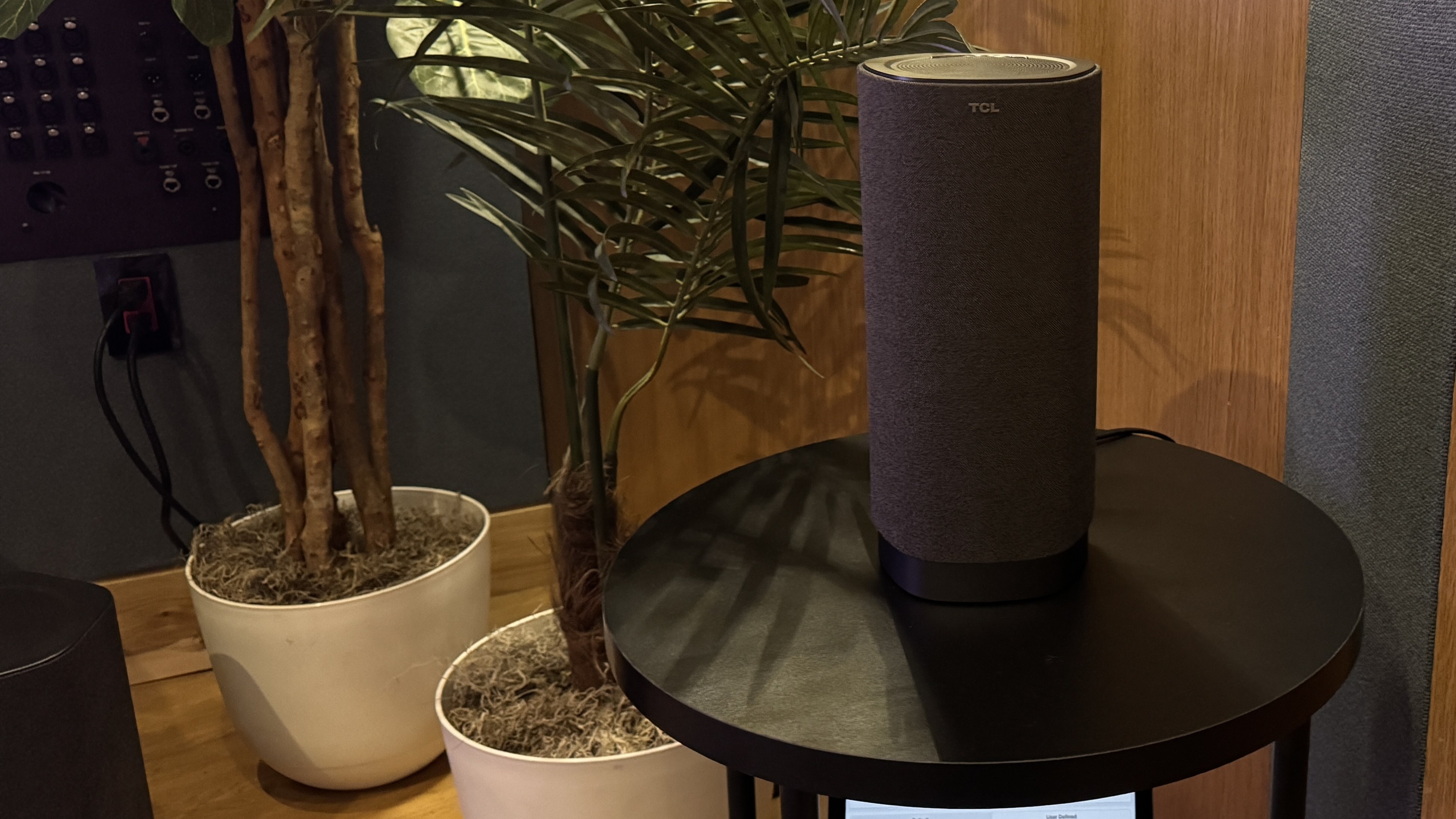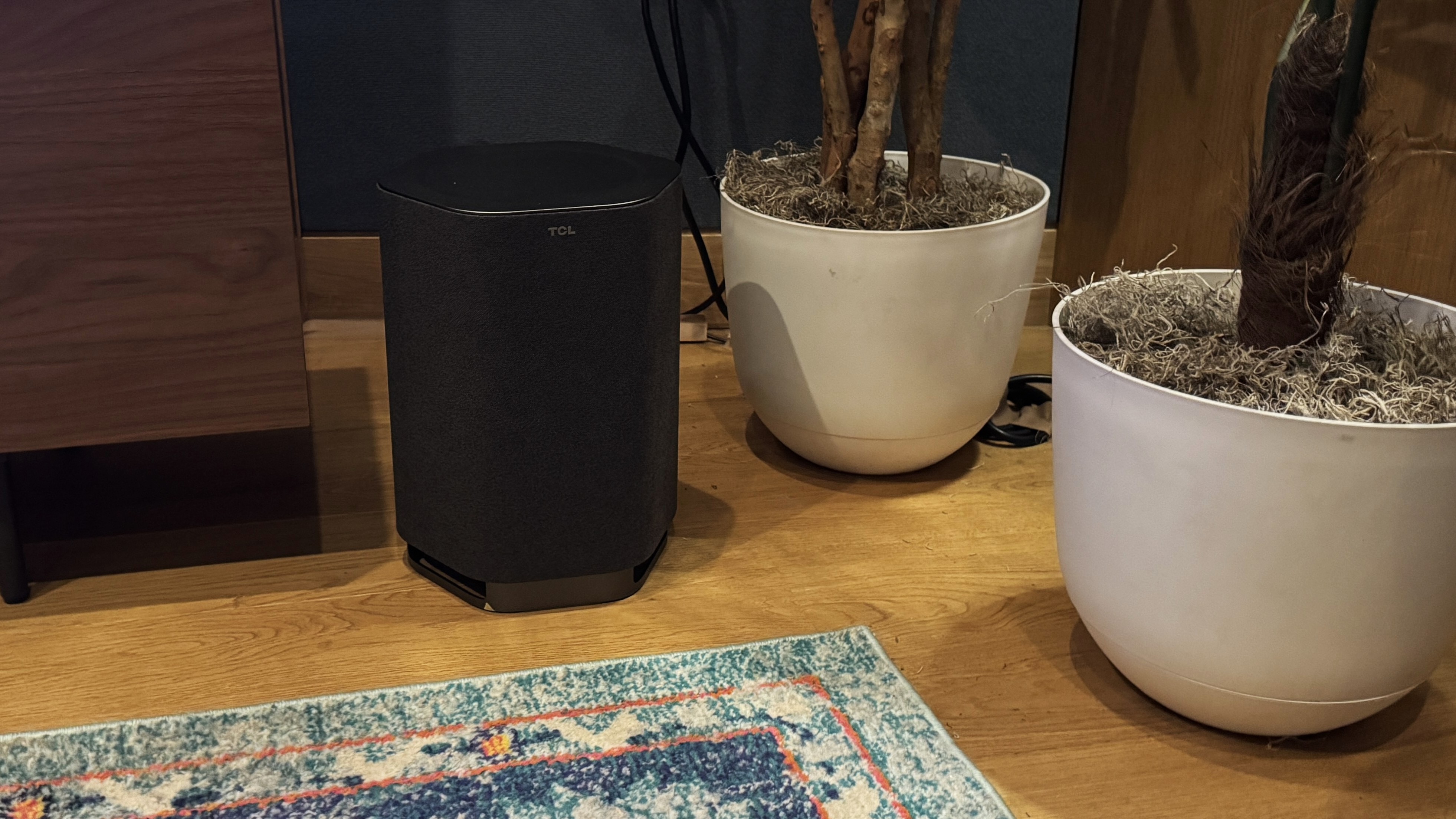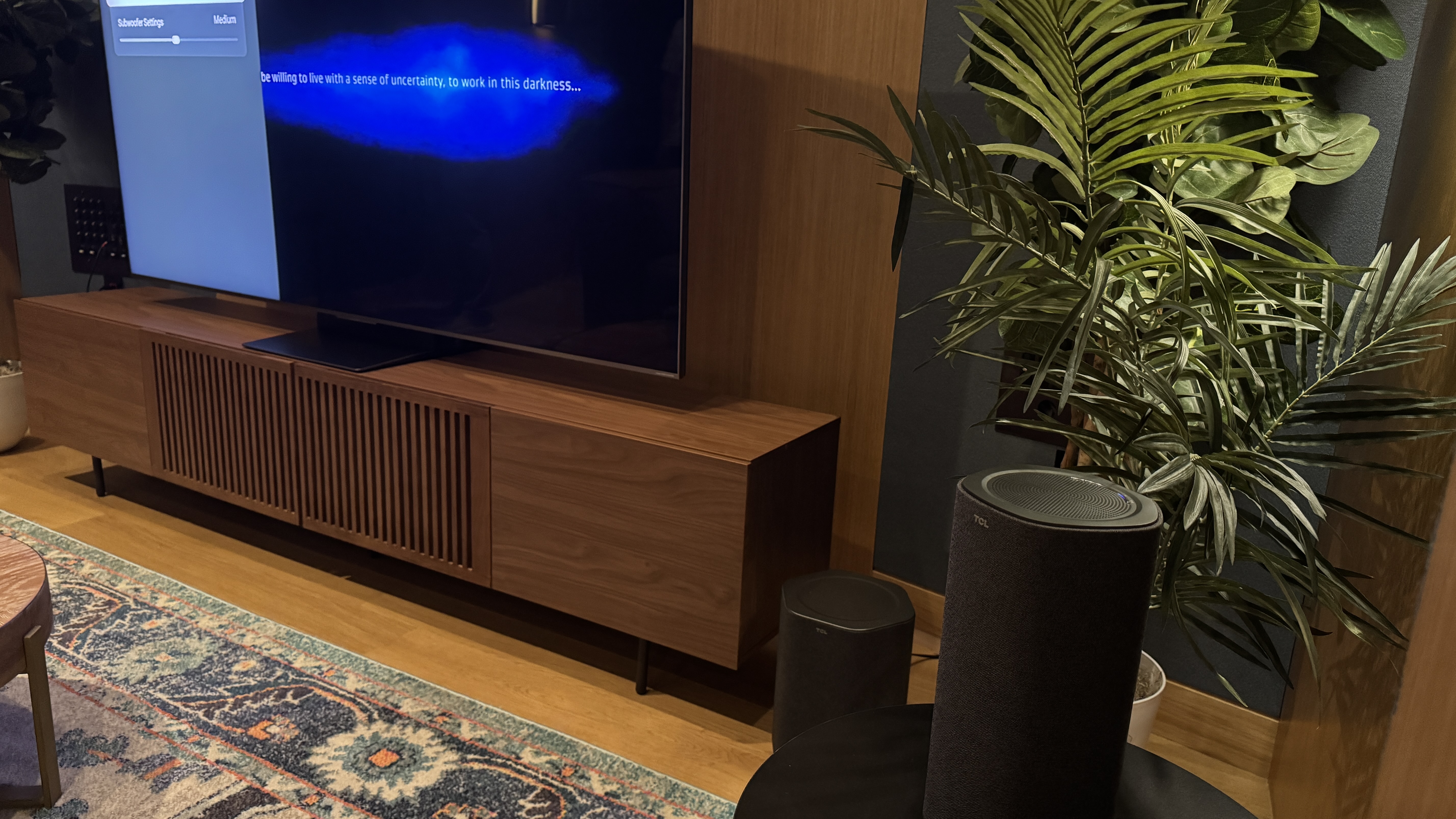I heard the new TCL Z100 Dolby FlexConnect speakers, and it could be the beginning of a new era for home theater

We’ve been hearing about Dolby FlexConnect for a few years since it was announced in 2023, and Dolby and TCL have given demos of the technology in the past, but we’re finally at the point where the technology is coming to the consumer market. And the first speakers to incorporate FlexConnect are the TCL Z100 and its companion Z100-SW subwoofer.
I got the opportunity to hear the speakers at Interscope Records in Santa Monica on a sunny LA afternoon (is there any other kind?) in early August. The demonstration was impressive for a first product attempt, although it did have some drawbacks. More importantly, I had the takeaway that FlexConnect and speakers like the TCL Z100 promise to go beyond the best soundbars in making home theater speaker setup easier and quicker than ever.
The event was a joint endeavor (much like the speaker) by TCL and Dolby. After introductions, there was a demonstration and brief Q&A about Dolby Atmos mixing before moving into a room with three TCL Z100 speakers and a Z100-SW subwoofer set up.
The Atmos mix demonstration session featured Nick Rives, the Director of Audio Engineering for Universal Music Group, who is also an accomplished and incredibly talented Dolby Atmos music mixer. Seriously, go listen to his Atmos mix of Billie Eilish’s “bury a friend” to get a great example of what a Dolby Atmos music mix can do.
I’ll wait. Okay, back? It’s really good, right?
In the session, Mr. Rives explained how Atmos and the way it’s mixed differ from traditional surround sound mixing. Basically, Atmos is more than just adding height effects.
For a quick primer, when you mix in surround sound, the sound is attached to a specific speaker in order to determine its location. So, for example, when there’s a car that screeches to a halt offscreen right, the mixer puts the tire squeal sound effect in the right front channel, probably with some reverb that trails it into the right surround speaker to give it some space and distance. But that means that if the right front speaker’s placement is wider than it should be, so is the sound.
Sign up for breaking news, reviews, opinion, top tech deals, and more.
Dolby Atmos, in contrast, involves object-based mixing. Each individual sound is considered an object, so when that tire squeal sound is mixed by the re-recording engineer, instead of attaching it to a specific speaker, it’s assigned to a place in space. Then, no matter what the Atmos configuration or speaker count — 5.1.2 in your living room, up to the dozens of speakers found in an Atmos cinema — when the Atmos soundtrack is decoded, that sound is recreated in the proper relative location.
Even with Atmos, there’s still an expectation of proper speaker placement near traditional positions for accurate performance. FlexConnect, on the other hand, takes that idea of sounds in a space to the speaker level. So what exactly is FlexConnect?
What is FlexConnect?

Dolby FlexConnect allows you to place any speaker that includes the technology wirelessly anywhere in your room. This could be in what would be considered a traditional surround sound speaker location, but the beauty of the technology is that it doesn’t need to be. After a quick automated setup so the system knows where each speaker is placed, the speaker is optimized to deliver Atmos audio regardless of its location.
One of the biggest hurdles that surround sound and Dolby Atmos have faced is the need for speakers to be in the correct position for audio magic to work. Over the years, there have been adjustments made to allow for more life-friendly configurations — for instance, soundbars, which don’t require widely set left and right discrete speakers that take up floor space. But if you want more than TV sound, you’ve always needed a soundbar or left and right speakers, not to mention proper placement of surround speakers for proper immersion.
FlexConnect speakers could theoretically be placed anywhere in a room, with their location detected during a quick setup process. Best of all, the speakers are wireless, making a location near power the only placement restriction. In practice, it makes sense to try and have the speakers placed somewhat near traditional speaker locations, but that’s not absolutely necessary.
TCL Z100 and Z100-SW: first look

The final part of the afternoon at Interscope was a demonstration of the new TCL speakers. The TCL Z100 is a wireless 1.1.1 cylindrical speaker with a fabric wrap. It measures 11.87 inches high, 5.42 inches wide, and 5.22 inches deep, and weighs 5.62 pounds. There are four buttons on the top around part of the up-firing speaker grille for power, volume, and to switch the source between Wi-Fi (to connect to the TV) and Bluetooth 5.3 for streaming music from a device.
The Z100-SW is a 130-Watt ported wireless sub with a 5.25-inch woofer. It’s very similar in design to the Z100 with a fabric-wrapped look, but it is bigger and more hexagonal. The Z100-SW is 13.15 inches tall, 9.61 inches wide, and 8.87 inches deep, weighing 9.59 pounds.
For the demonstration, the setup included a TCL QM8K TV, with its built-in speakers turned on and contributing to the sound, three Z100 speakers, and a Z100-SW subwoofer. Two of the Z100 speakers were on the sides of the room, towards the front, but not in the traditional left and right positions flanking the TV. The third Z100 was a few feet behind the listening position to the right.
The sub was up to the right of the TV, and there were no speakers in the back left of the room. And this is one of the limiting factors of the Z100 FlexConnect system (although not of the FlexConnect technology): Only four speakers, including a sub, can be connected at one time, so the system we listened to could not be expanded. If you wanted to add a speaker to the back left, you’d need to remove the sub.
Setup was surprisingly fast. Once you enter your seating distance, the speakers will play a pleasant 10-second track, and the microphone in the TV will listen to determine the speaker locations. Once completed, the speakers will show their positioning on a room map displayed on the TV, which looks to be remarkably accurate.
There’s no need for an extra microphone setup, as is common with an AVR, or the use of an app on another device. It’s all handled on the TV. In fact, it has to be handled on the TV — specifically, a TCL QM9K, QM8K, QM7K, or QM6K. Dolby allows for companies that use FlexConnect technology to use an app for setup and calibration, but in the case of the Z100 system, one of those three TCL TVs is a requirement (future TCL TVs will also support FlexConnect and work with the Z100 system). There’s the possibility of other calibration solutions happening in the future from TCL, but not at the initial release.
When it came to the demos of Hollywood films, the FlexConnect system filled the space well and delivered a convincing Atmos performance. The Z100-SW had more bass than I expected from its 5.25-inch woofer – a testament to the design of its enclosure.
Missiles flying around the room were well handled by the Atmos up-firing speakers on the Z100. As mentioned, the back of the room only had a single Z100 on the right side. There was a bit of a hole in the sound canopy to the back left where no speaker was placed, but the sound wasn’t completely absent, and it didn’t cause me to be pulled out of the scene when sound flew back into that corner. Still, if I had the opportunity to move the speaker, and there was somewhere to place it, I’d put a single rear speaker behind the listening position instead of at one of the back sides.
Connect-ing the dots

Even with some of the limitations of the system in its current form, the TCL Z100 Dolby FlexConnect speaker demo proved it to be an impressive and easy-to-use solution. It seems to be perfectly designed for someone who wants improved sound for their TCL QM series TV without having to rely on a soundbar or discrete Atmos speaker system powered by an AVR.
The pricing is comparable to competitive systems as well. A single Z100 speaker will cost $399.99 (around £295), with an expected street price of around $300 (around £220). Bundles are also available, with two Z100s priced at $799.98 (around £590), two speakers and a sub priced at $1,299.97 (around £960), and three speakers and a sub for $1,699.96 (around £1,300). Again, these prices are all MSRP, so street prices will definitely be lower, as is the tendency with TCL products
Beyond the TCL Z100 FlexConnect speaker, Dolby’s technology seems incredibly promising by lifting some of the restrictions we’ve all become accustomed to with home theater sound. And by alleviating those barriers, there’s a chance that more people will feel compelled to bring the Atmos experience into their homes for both movies and music. The TCL Z100 FlexConnect speaker isn’t just a new speaker from TCL; it’s the beginning of a new way to think about home theater.
You might also like
John Higgins got his start in 2003 at Home Theater Magazine working in its testing lab while writing reviews on speakers, TVs, universal remote controls, HTPCs, and other various bits of AV tech. Over the following decades, he's written for Sound & Vision, the New York Times' Wirecutter, IGN, T3, Projector Central, and Channel Guide Magazine as a tech columnist. Starting in 2022, John worked for Reviewed, eventually as the tech managing editor, before moving to Digital Trends to lead the AV section as its senior editor until April 2025. He is also an ISF Level III-certified display calibrator.
When not working as a tech journalist, John is a professional musician and music teacher, having received his master of music in collaborative piano from the University of Southern California.
You must confirm your public display name before commenting
Please logout and then login again, you will then be prompted to enter your display name.